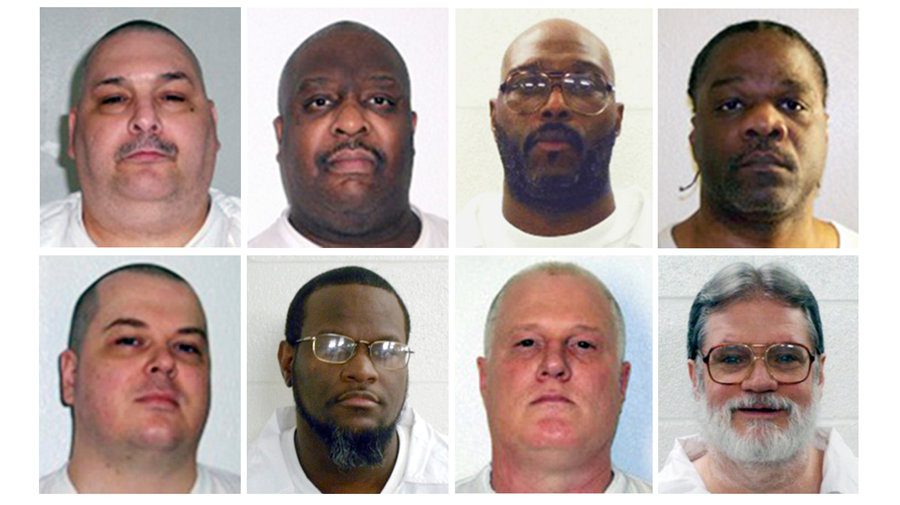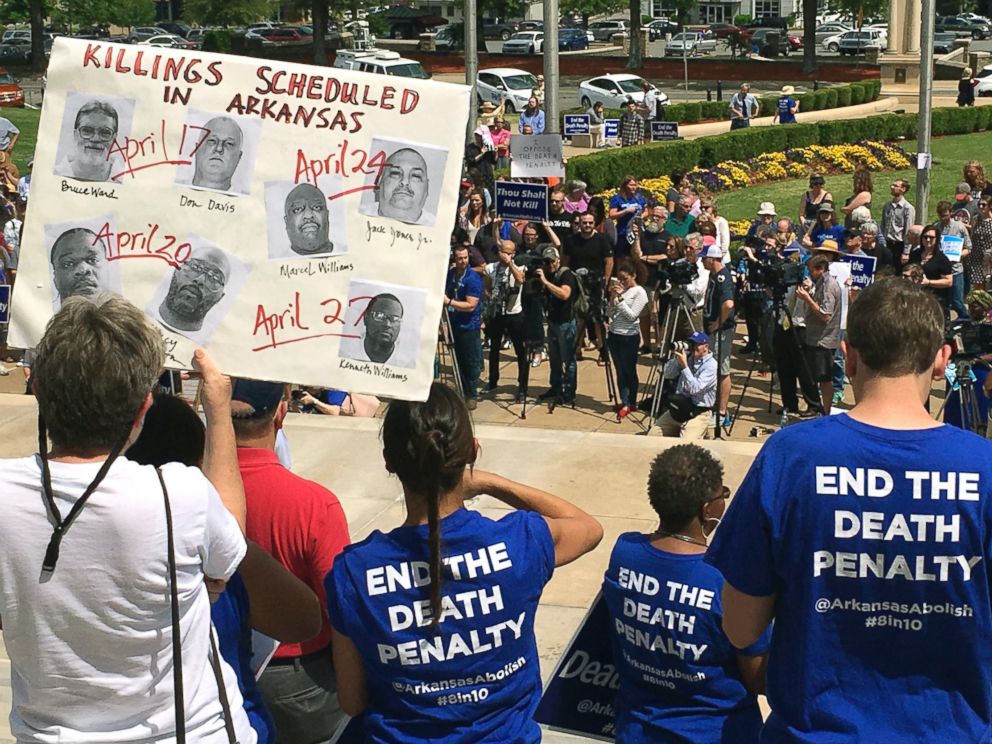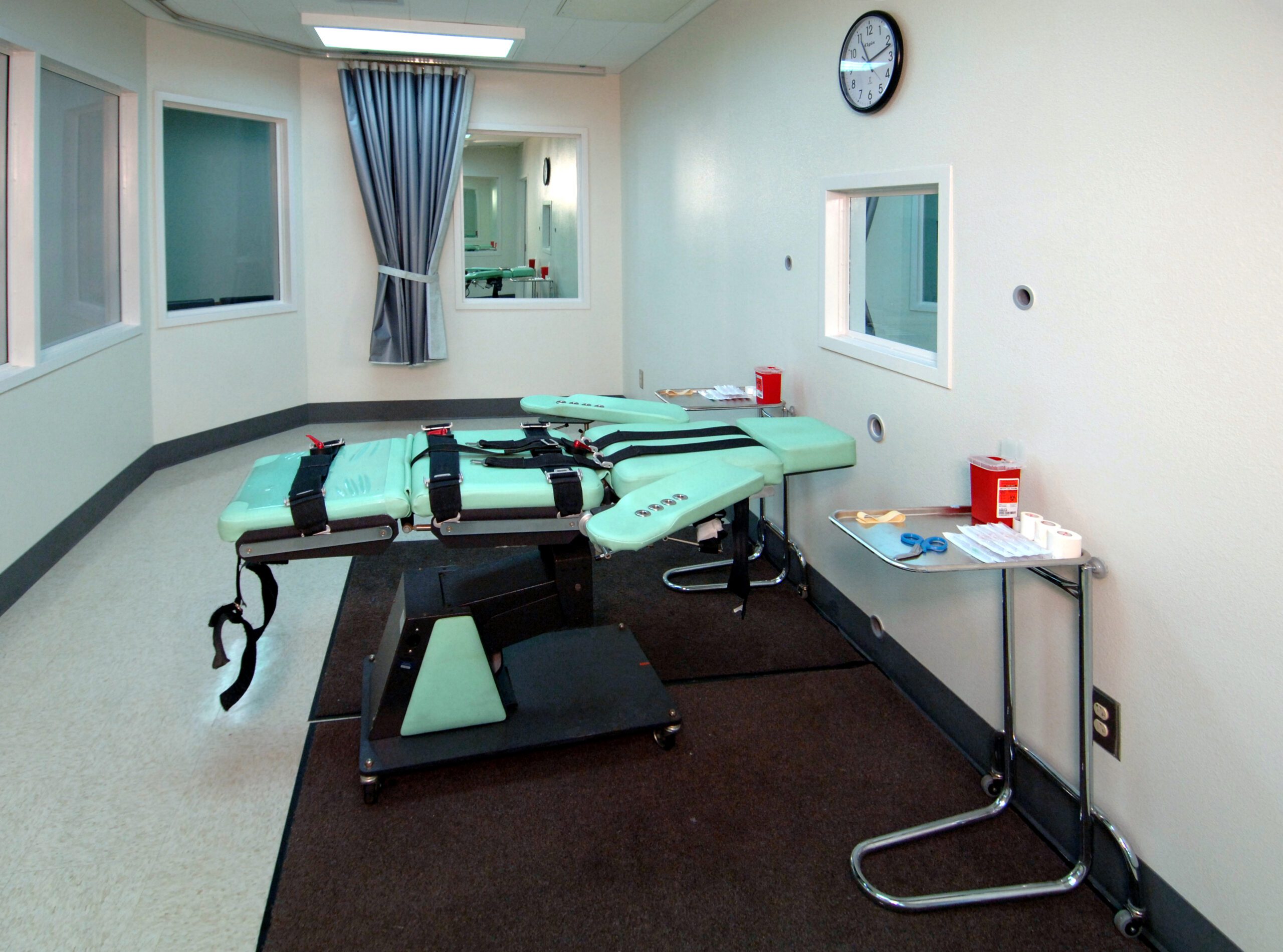These days, there’s a slew of podcasts and TV dramas and documentaries that focus on exonerees, shows that friends recommend to me because of the narrative work I do for defense attorneys representing indigent men and women charged with capital murder. Serial, Making a Murderer, Rectify, Vindicated, etc. Have I caught any of these shows? Because I really should, if I haven’t.
Americans are particularly obsessed with prosecutors who violate laws and ethics to trap innocent men and women on death row. They frenzy-feed on such stories. Smitten with the idea of my work, but not the reality of it, one of my friends always introduces me to her activist comrades as someone who works for the Innocence Project, even though I’ve repeatedly told her I do not, that my clients are rarely guilt-free. She does not or cannot hear me.
She and Americans like her—they’re recognized, during voir dire, as “automatic killers”: people who don’t believe in executing criminals because there’s an off-chance one of them might be innocent. Translation: when a defendant is found guilty, these types take less than an hour to vote for a death verdict. For them, guilt triggers an automatic, involuntary reaction.
As David Dow, a prominent death penalty attorney in Texas, said in an interview with Gulf Coast, the narrative of an innocent man facing execution has “extremely limited utility” in the real world. In about 95 percent of death penalty cases, there is no serious question about guilt, only about the punishment: will it be death or life without the possibility of parole? Stories about exonerees like Anthony Graves or Michael Morton horrify us; we rubberneck and want all of the details, but most of us won’t listen to a story intent on humanizing a murderer. One story mirrors our identity—any of us could be falsely accused! The other tale is about the Other—because it’s unfathomable that one of us would commit murder. We aren’t killers; they are.
*
This month, the state of Arkansas set out to execute eight men in eleven days, and only two of them had innocence claims based on untested DNA evidence. Arkansas hadn’t executed anyone since 2005, but suddenly, they aimed to slingshot eight birds in eleven days because their one supply of midazolam, the sedative which allegedly deadens the victims so they can’t feel themselves being murdered, was about to expire.
Reporters, activists, and defense attorneys focused their response on the assembly-line approach, which reeked of “unusual” if not also “cruel,” and thus violated the Eighth Amendment. Remember, for comparison, that an execution schedule like this one had not been attempted in the United States since 1951, when Virginia executed, in fifteen-minute intervals on two separate days, seven black men accused of raping a white woman.
The New York Times and the Washington Post also exposed the way in which the Arkansas Department of Corrections obtained the three drugs used in their execution cocktail. McKesson Corporation, a pharmaceutical company that maintains a strict refusal policy to sell drugs for the purpose of state-sanctioned killings, accused Arkansas of intentionally misleading them. The state had ordered the second required drug—vecuronium bromide, which, at certain doses, paralyzes muscles, halting the lungs and so also breathing—using an account opened under the valid medical license of an Arkansas physician, implicitly representing the purchase as one for legitimate medical use, to treat and to heal. When McKesson found they’d been manipulated, they threatened legal action, and Arkansas agreed to return the drugs for a refund, but then never did, even though McKesson refunded their money and provided return shipping labels. The Arkansas Department of Corrections initially refused to comment on this matter. So did the state’s governor, Asa Hutchinson.
Nor was anyone talking in detail about the logistics of executing eight men in eleven days. At a news conference, Governor Hutchinson admitted he worried about the general strain on prison employees, but he and Wendy Kelley, the state corrections director, had determined it wouldn’t be “any easier to string” the executions over five months than to do it in “the sequence we have outlined.” Two dozen former corrections officers wrote a letter to warn him about the “extraordinary and unnecessary stress and trauma” that multiple executions in so little time would pose for prison staff, but even their words, lacking specificity, allow us to duck actualities.
Eight men in eleven days. Eight extraction teams, dressed in the required riot gear, rehearsing the final removal of inmates from the windowless quiet cell. Eight officers playing the role of the condemned man, strapped to the table for “practice.” Eight times checking the actual inmates’ veins for the most successful location to insert the IV and eight times asking if they would assist in their own demise by consenting to a stent in their arms to pump the poison more efficiently into their bodies if the IV failed. Eight inmates dressed in clean whites and taking the dead man’s walk for real. Eight escort teams buckling a body on the gurney and attaching IV lines, two in each arm. Sixteen executioners, two for each condemned man, hidden behind a wall, plunging syringes into the tubes leading to the condemned man’s arm, not knowing which one of the IV lines, which executioner, was delivering the fatal doses so each had plausible deniability. Six volunteer citizens, a total of forty-eight, all strangers to the condemned, witnessing the executions, as required by Arkansas law. Eight times the warden, perhaps, removing his glasses, signaling for the hidden executioners to pull the plungers so no one had to say the words “Go Time” out loud. And the coroner pronouncing a healthy man dead, eight times in eleven days. What emotions would be at play for the first that would be numbed by the eighth?
But we aren’t going to talk seriously about the psychological damage that states inflict on their own employees when conducting executions. We definitely aren’t talking about eight murders in eleven days the way we talk about it in Texas when a homeless man or young man of color or hopeless prostitute is the perpetrator. We will never say eight in eleven days constitutes a “spree,” a series of killings happening so closely together they are legally considered part of the “same course of conduct”—which is one of nine aggravating factors that raises a murder charge in Texas to capital murder. We aren’t going to say the State of Arkansas was committing capital murder. We aren’t killers; the inmates are.
*
All day, on April 17, when the first two inmates, Don Davis and Bruce Ward, were scheduled to die, their last-minute appeals snaked through the courts. So did complaints filed by McKesson, Fresenius Kabi USA, and West-Ward Pharmaceuticals. When asked to comment, here’s what Governor Hutchinson said: “The jurors have spoken.” Here’s what Arkansas Associate Justice Shawn Womack said: “The jurors have spoken.”
District attorneys and judges can easily fill a jury box with twelve “automatic killers,” seemingly conscientious people who lean heavily toward death the second a defendant is found guilty. His or her obvious guilt surprises them; they expected this to be more heavily contested. This is the story they love: innocent people wrongly accused. When it doesn’t pan out that way, they cannot consider the defendant’s human story, something the law requires during the punishment phase. Instead, their anger and subconscious biases crowd the final deliberation room; ideas about the “worst of the worst” are not based on facts of the crime or the truth of a defendant’s life but rather fears. Black and muscular. A particular religion. A neighborhood so dangerous society should protect itself from invasion by its inhabitants.
In an essay in Creative Nonfiction’s “How We Teach” issue, a writer describes her years sharing poetry with at-risk middle schoolers in East LA. She says, “I was never afraid of them.” She says, “Although, years later, I’d wonder if I should have been.” In the immediate firsthand experience of teaching, she felt no fear of them—these thirteen- and fourteen-year-olds—but years later she says fear might have been the healthier response. Fear? Of children? Maybe she’s well-meaning—there she is, conducting a Writers in the Schools program—but what she’s saying is that her charity work earned her a bravery badge. What she’s doing is making it easier for police officers to kill unarmed men and women of color while claiming similar fear. What she’s doing helps train future jurors to kill blacks, Latinos, Muslims, without much more than an hour of deliberation. If we don’t believe monsters exist, we should. If we aren’t afraid of them, we ought to be.
I cannot tell you how many times district attorneys offer defendants a life without parole plea when they know they shouldn’t be seeking death at all. We could give you a better deal, but we don’t have to because we can win at trial… Because jurors fear people of color, Jews, gays, Muslims, tweakers, Mormons, etc. Even in cases where the defendant is undeniably mentally ill—say, his brain shows organic damage, more than a dozen bleeding holes where synapses no longer connect, or maybe there’s a lengthy history of repeated hospitalizations and countless psychiatrists—district attorneys will reject insanity claims without even offering contrary proof. Because they can win, anyway.
*
On April 17, federal judges stayed the executions of Davis and Ward. Nonetheless, Arkansas Attorney General, Leslie Rutledge, appealed Davis’s stay to the Supreme Court, and he was moved to the quiet cell, where he used a telephone to say goodbye to family and friends and spent his last hours with his attorney, Deborah Sallings, and his longtime spiritual advisor. The Supreme Court ultimately upheld the stay but didn’t do so until twelve minutes before midnight, when Davis’s execution warrant would have expired.
Every news account I read in the first minutes of April 18 mentioned Davis receiving his last meal—fried chicken, rolls, great northern beans, mashed potatoes, and strawberry cake—a customary act of charity. A cliché, this plate of food, like the condemned man’s last words, and a brief description of his crime, some traditions we gather around, a wall we hide behind, before and after an execution, pretending we’ve humanized the procedure and have recorded the substance of the man instead of fetishizing him. In truth, in Arkansas, the “last meal” is not prepared by request but is rather the same meal everyone at the Cummins Unit receives for dinner on execution night. A special meal, yes, like the ones inmates receive on holidays—as if they’re all celebrating a festive occasion, their friend from the row waiting in the quiet cell for his impending death.
While most reporters listed the contents of Davis’s last meal, none of them talked about the fact that dinner was delivered just before 3 p.m., leaving nine more hours before the death warrant would expire. Nine hours for Davis to mentally inventory everything he was about to lose, everything he loved: his dear friend Betsey, and Dorys, whom he calls “Mother” and who calls him “Son.” Nine hours during which, according to a private statement to me from Sallings, she and Davis spoke of politics, TV shows, music, things they did as children, what Davis hoped for in death, his deep remorse, his desperate desire to understand what made him act as he had so many years ago. They listened to the other prisoners’ yelling and banging, the life of a prison, until the night wore on and the others drifted into sleep. In the quiet that followed, Davis started to hear voices and laughter in the death chamber, the escort team waiting, too, doing whatever they do to kill the hours. On the TV playing in the room, there was yet no word from the Supreme Court, and so newscasters repeated the details of Davis’s “last meal,” over and over—the only story they could think to tell.
Between 11 p.m. and midnight, the final hour, Davis’s unease grew. Reporters couldn’t know that he looked often toward the door leading into the death chamber, that he stood more than he sat, that he fiddled with his few possessions—no more than would fit in a tiny regulation box. At one point, he announced, he was sure the execution was going to happen, and Sallings didn’t reassure him because she felt the certainty of it, too.
Reporters didn’t describe for their readers that when the door to the death house opened at 11:45, Davis wasn’t relieved but instead exclaimed aloud, “This is it! There’s wardens and everyone coming.” Coming for him. Because, as no reporter mentioned, the escort team, as is customary, stands on high alert in that final hour before midnight, ready to mobilize quickly and strap Davis to the gurney and insert the IV if the Justices vacate a stay and the state has only forty to thirty minutes to proceed to their victory.
Which would happen with Ledell Lee three nights later, at 11:21 p.m., everything transpiring so quickly that his attorney, Lee Scott, was whisked from the quiet room without a chance to say goodbye. Ledell Lee—the man with a genuine innocence claim, and represented by the Innocence Project, the man whose story included fingerprints that weren’t his and a prosecutor sleeping with the trial judge and other shenanigans so perfect for a podcast—was pronounced dead at 11:56 p.m. Of course, reporters described his last words and how he declined his last meal in lieu of Communion, but only his attorney told the story about Lee “willing” his “estate”—his potato chips, saltine crackers, cups, and condiments—to his friends on the row. Some people won’t find this last act all that compelling, and I honestly don’t know what to say to that.
By the end of April, Arkansas succeeded in killing four of the eight inmates in their assembly-line conveyor belt, but still none of us will talk about the irony of Americans justifying the scenario in the death chamber. We say it’s a picture of society acting in self-defense: we’re the ones in danger, not the men and women strapped to the gurney, the ones we’re aching to kill. It’s so easy to cast ourselves as human, to pitch them into the role of monsters, that we hardly notice now when we do it. We buy and sell that narrative every day.
As long as the privileged praise their charity work as brave, as long as we count our activism as a good deed by which we remind the recipients how helpful we are rather than how equal we are, as long as we read or teach token stories of difference only to boast about our willingness to struggle for a common bond with difference—say, lesbians or young men of color or immigrants who barely speak English—then district attorneys and governors will continue to talk about winning when they mean killing. And they’ll blame it on us, because when they say, “The jurors have spoken,” they’re talking about you and me.
***
Image credits: feature image, image 1 © Arkansas Department of Corrections via AP, image 2 © Kelly P. Kissel/AP, image 3.







